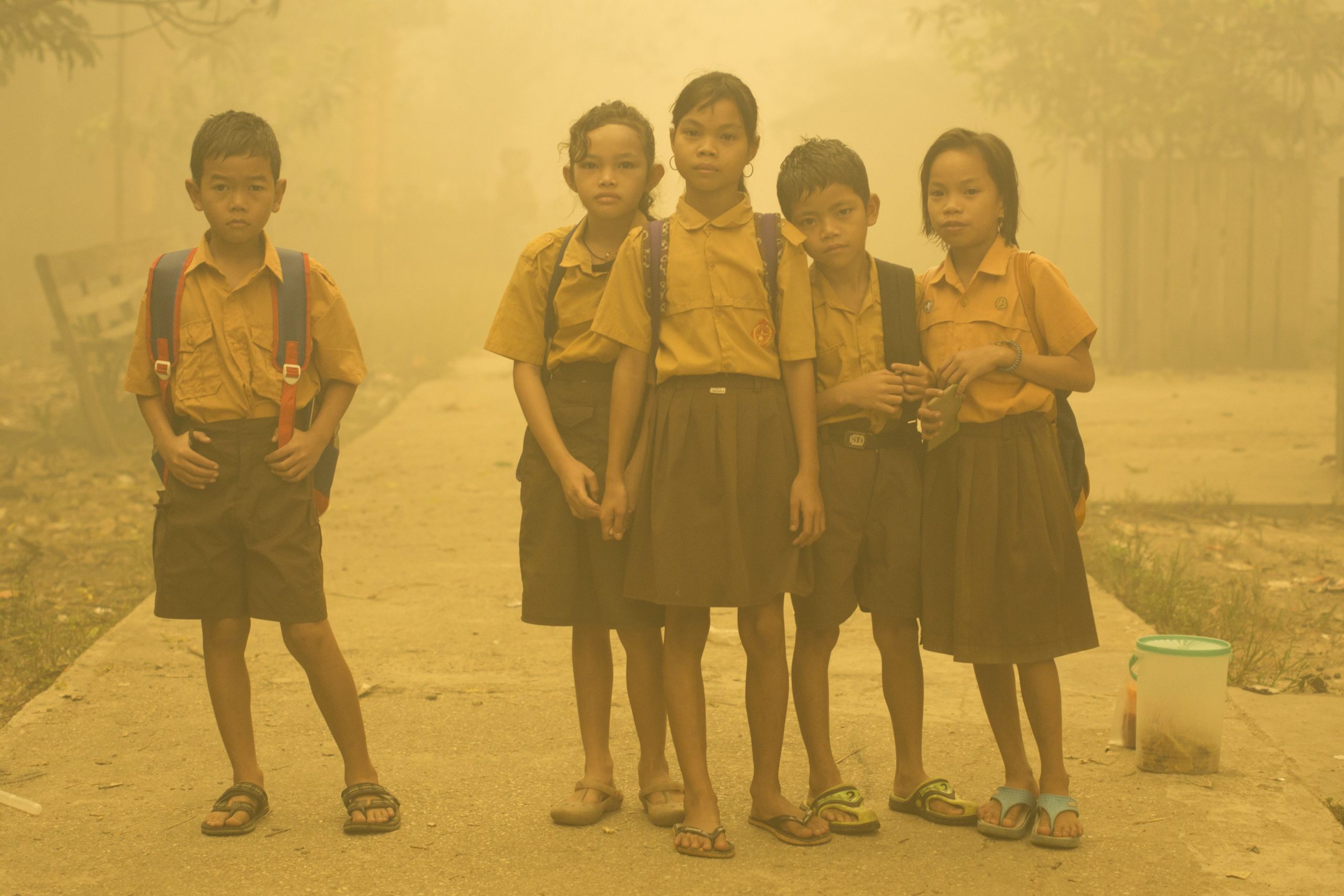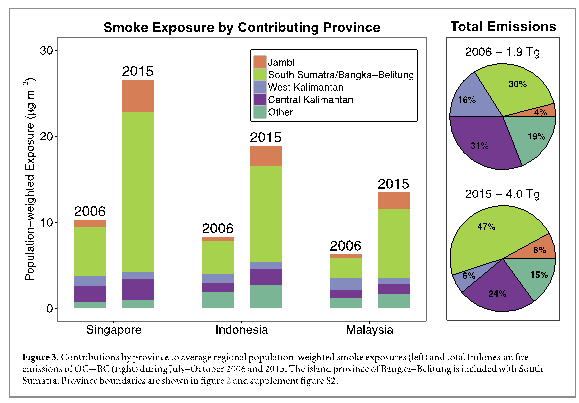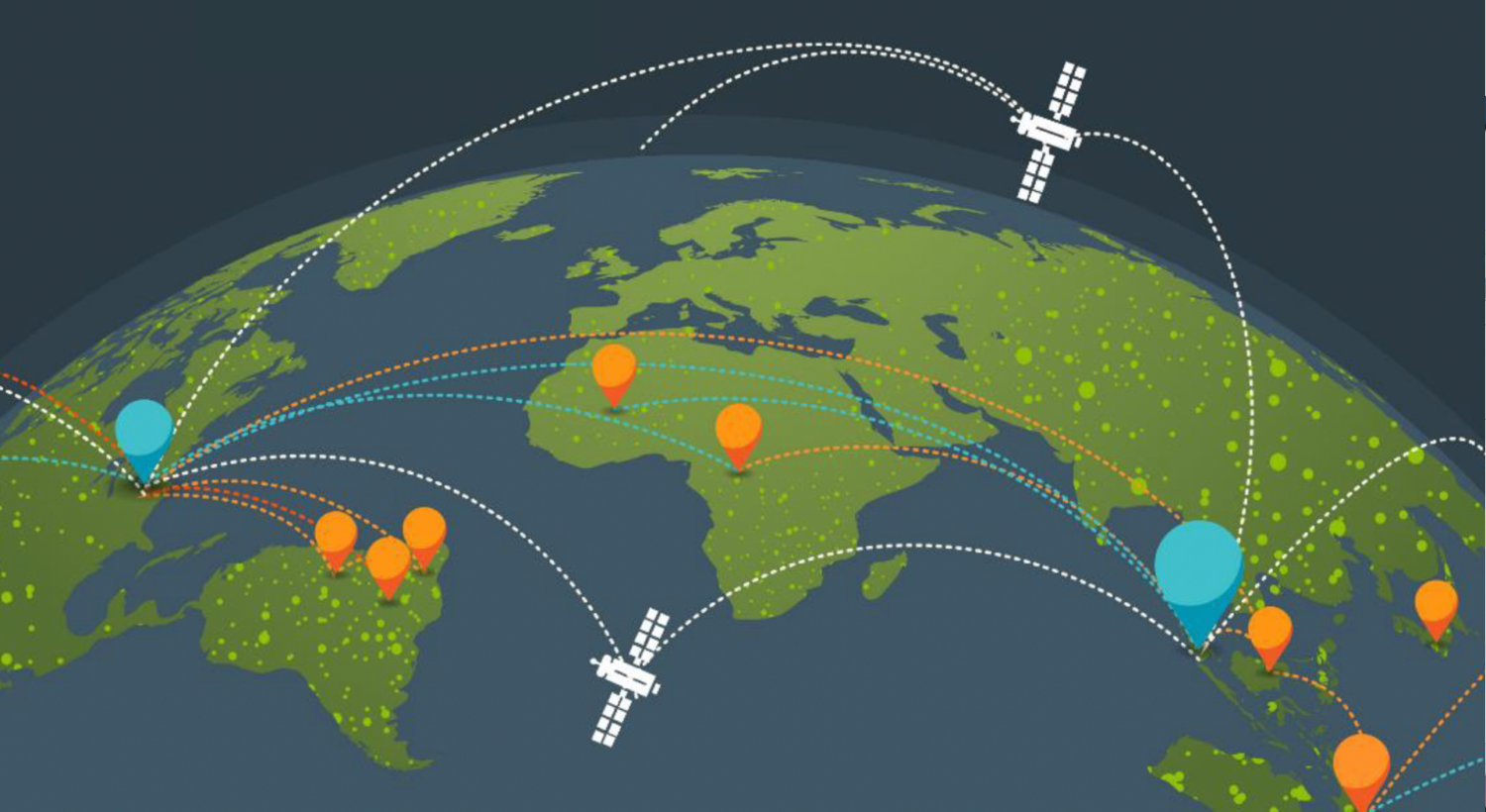
Harvard-Columbia study finds that 2015 haze in Indonesia likely caused 100,300 premature deaths
By Etelle Higonnet
Jakarta, 19 September 2016 – A new study being published Monday by scientists at Harvard and Columbia University has estimated that haze from Southeast Asia’s 2015 haze crisis may have caused 100,300 premature deaths. These deaths span three countries: Indonesia, Malaysia, and Singapore. The number of individuals affected in other countries was not calculated.For 2015, the team estimated:
- 91,600 excess deaths in Indonesia,
- 6,500 in Malaysia, and
- 2,200 in Singapore.
These impacts are even greater than a previous major haze event in 2006, when 34,600 deaths occurred in Indonesia; 2,300 in Malaysia, and 700 in Singapore. The numbers show that Indonesians themselves have been the main victims of companies and other actors engaging in deforestation and burning, with more than 90% of victims Indonesian. Indonesians will be the primary beneficiary of government and private sector action to reduce haze.
In addition, the scientific team is in the process of calculating premature deaths from haze for additional years, and for a range of land-use scenarios going forward to 2030. Their full research will be available in 2017.
Their research complements that of other scholars, and sheds important light on which areas are responsible for the haze. It can provide important evidence of damages and liability of companies responsible for burning under Indonesian, Singaporean, and Malaysian law that can be used in both civil and criminal legal proceedings.
Previously, companies and governments in the region provided repeated claims that that fewer than two dozen deaths were recorded. This study reveals the truth. This research shows that haze kills, it kills across borders, and it kills on a massive scale.
Haze’s impacts
The new research by Harvard and Columbia scientists supplements what we already knew about the harms and illnesses caused by haze:
- For several months, approximately 43 million people on Sumatra and Kalimantan were inhaling toxic fumes;
- An estimated half million people in Indonesia sought medical care because of haze;
- Sumatra and Kalimantan saw levels of the Pollutant Standard Index close to 2,000 when anything above 300 is considered hazardous to human health.The haze from Indonesia’s forest fires contributed to about 3% of the planet’s greenhouse gas emissions (GHG) in 2015;
- Indonesian haze emissions outstripped the entire US economy’s emissions for 38 out of 56 days in a row (even though the US economy is roughly 19 times the size of Indonesia’s economy);
- Previous research by the World Bank already established that the 2015 haze cost Indonesia at least USD 16.1 billion (IDR 221 trillion), equivalent to 1.9% of 2015 GDP and roughly twice what the tsunami cost;
- Six Indonesian provinces declared a state of emergency in 2015 due to haze;
The health impacts documented by the Harvard study only account for a portion of those likely caused by haze. This study doesn’t include the comprehensive toll over the last decade. It only deals with deaths from particulate matter and not mortality from other hazardous pollutants inside killer haze like ozone. In addition, it explores only deaths and not illnesses. Last, the study does not include health effects in children, nor does it examine in-depth the impact on especially vulnerable groups like the roughly 20,000 firefighters battling killer haze up close for extended periods of time; or the combined toxicity of exposure to multiple hazardous elements in the air at the same time.
Recommendations: More should be done to stop fires and haze
Since the haze crisis, the Indonesian government has undertaken a number of positive steps to prevent a recurrence of the haze crisis, including a moratorium on new palm oil concessions, a ban on development of peat, and the establishment of the Peat Restoration Agency (BRG) that is working hard to conserve and restore peatlands. In part as a result of these efforts, haze in 2016 is significantly reduced from last year. Nonetheless, the results of this study show the severity of the impacts, and that haze prevention efforts across all jurisdictions need to be redoubled. In particular, while the government has ramped up its efforts, private sector efforts are lagging. The following measures can help:
- Major palm oil, paper, and rubber companies should immediately create a joint monitoring and enforcement system that can ensure that Indonesian commodities connected to haze are prevented from reaching the marketplace.
- Full implementation of a ban on burning at any scale, backed by substantial public education efforts and support for smallholder access to markets.
- Palm oil, paper, rubber and other agricultural and forestry companies should take steps to ensure they have the equipment and manpower needed to put out fires (this is already a requirement under Indonesian law, but companies have often not met the standard, and the law has not been fully enforced).
- Companies that engage in activities that increase the risk of burning, such as draining of peat, deforestation, and poor forestry slash management should be held accountable.
- Companies and others should rewet peatlands, and provide support to Indonesian efforts to reduce haze, such as the Peat Restoration Agency (BRG).
- A total ban on further deforestation, including of all High Carbon Stock landscapes, should be announced until data on full health costs has been properly collected and analyzed, and the implications of further deforestation on mortality is fully understood.
- Completing the “one map” initiative immediately would clarify land ownership throughout Indonesia, helping to resolve recurring land conflicts, standardize mapping, and feed in to Indonesia’s centralized Land Registry. This initiative has been caught up in misplaced concerns about confidentiality that undermine government efforts at conservation, and should be resolved now. In the meantime, both the government and the private sector have access to sufficient maps to hold companies responsible for haze and deforestation.
- Prioritize fire prevention and investigate, prosecute, and punish those who contribute to haze. Investigations into present crimes must not preclude robust investigations into past burning, including by largepalm oil, paper, and timber companies.
- Companies tied to any past or present burning should contribute to the health care costs of haze, and take financial responsibility for deaths that research connects to haze from their concessions.
Legal and policy Implications:Companies whose concessions are linked to haze-related deaths – and executives – should be held accountable for haze. Moreover, corporate or financial institutions should be held responsible for financing companies known to have encouraged or set fires resulting in killer haze.
Background: how can haze kill people? What is inside killer haze, and what does it do to humans?
Thousands of premature deaths and illnesses are due to the many harmful or toxic elements in killer haze, but a key deadly element is ” PM2.5 particles.”PM2.5 is what the recent Harvard/Columbia study examined. PM2.5 is particulate matter measuring 2.5 micrometers or less. (For comparison purposes, fine beach sand can be 90 micrometers and a human hair is 50 to 70 micrometers.) PM2.5 particles are so minute that they invade the smallest airways of the human body deep within the lung and the smallest can even find their way into your bloodstream.
However, PM2.5 is not the only threat to human health in haze. Besides particulate matter (PM) composed of organic and black carbon, smoke and gasses from forest and peat fires can contain dangerous elements such as ammonia, cyanide, formic acids, formaldehyde, carbon monoxide, carbon dioxide, methane, methanol, benzene, mono-nitrogen oxides, dimethyl sulfide, potassium, sulfur oxides, aldehydes, carbonyl compounds, methyl chloride, methyl bromide, non-methane hydrocarbons, ethylene, polynuclear aromatic hydrocarbons and their oxygenated derivatives, as well as irritant and hazardous volatile organic compounds. These elements are likely to have been present in Indonesia’s killer haze for many years. Depending on what is burning, on ventilation rates, and on the temperature of the fire, the type of particles and chemicals in haze can vary. In some cases, Indonesia’s haze contains extraordinarily high levels of toxic elements separate from, and in addition to, PM2.5 For instance, when the Center for International Forestry Research measured carbon monoxide levels in Central Kalimantan in mid-October 2015, the levels were 30 times higher than normal, even indoors and even over 30 kilometers from the nearest fire.
To complement the Harvard/Columbia modeling, it is useful to look at evidence from a medical, physiological perspective. The most common morbidity and mortality impacts of PM2.5 from smoke from peat and forest fires include all-cause cardiac conditions, neonatal mortality, cardiorespiratory mortality, exacerbations of respiratory and cardiovascular conditions, and inflammation. Worldwide, research indicates health impacts of peat fires range from severe to mild: from heart attacks to non-lethal ailments like headaches, watery eyes, fatigue, dizziness, weakness, sleepiness, nausea, vomiting, confusion and disorientation; asthma, bronchitis, chest pain, respiratory infections, hypertension, cardiac dysrhythmia. Children are particularly vulnerable to repeated and prolonged exposure to PM – as happened to millions of children across Indonesia, Singapore, and Malaysia. Killer haze may harm the growth and functioning of children’s lungs, leading to children’s decreased pulmonary function, increased respiratory symptoms and respiratory infection, and increased chronic lung disease. Prenatal exposure to PM is linked to low birth weight, pre-term delivery, and fetal death.
Regional Responsibility for Haze –where is smoke exposure coming from?
The study includes a detailed analysis of the contribution to haze from different regions, highlighting which areas deserve the most focus. The following graph is excerpted from the study and shows the source of haze:

In sum, South Sumatra should be a primary focus of efforts to tackle haze, though given the significant health and environmental impacts, Jambi and Kalimantan should also receive attention.
Conclusions
Overall, this new study shows that the haze crisis’ health impacts are far more severe than previously claimed, and should prompt calls for legal accountability for companies engaged in deforestation and burning. The Indonesian government has undertaken many critical efforts to prevent recurrence of the haze crisis. This study shows the need to continue and increase these efforts, and the urgent need for new private sector mechanisms to prevent the 2015 haze crisis from ever recurring.
Etelle Higonnet is the Campaign and Legal Director for Mighty (www.mightyearth.org), a global environmental organization. A graduate of Yale Law School, she has worked for many years on environmental and human rights policy in Southeast Asia.
Etelle Higonnet is the Campaign and Legal Director for Mighty (www.mightyearth.org), a global environmental organization. A graduate of Yale Law School, she has worked for many years on environmental and human rights policy in Southeast Asia.
Featured photo © Ardiles Rante / Greenpeace.


